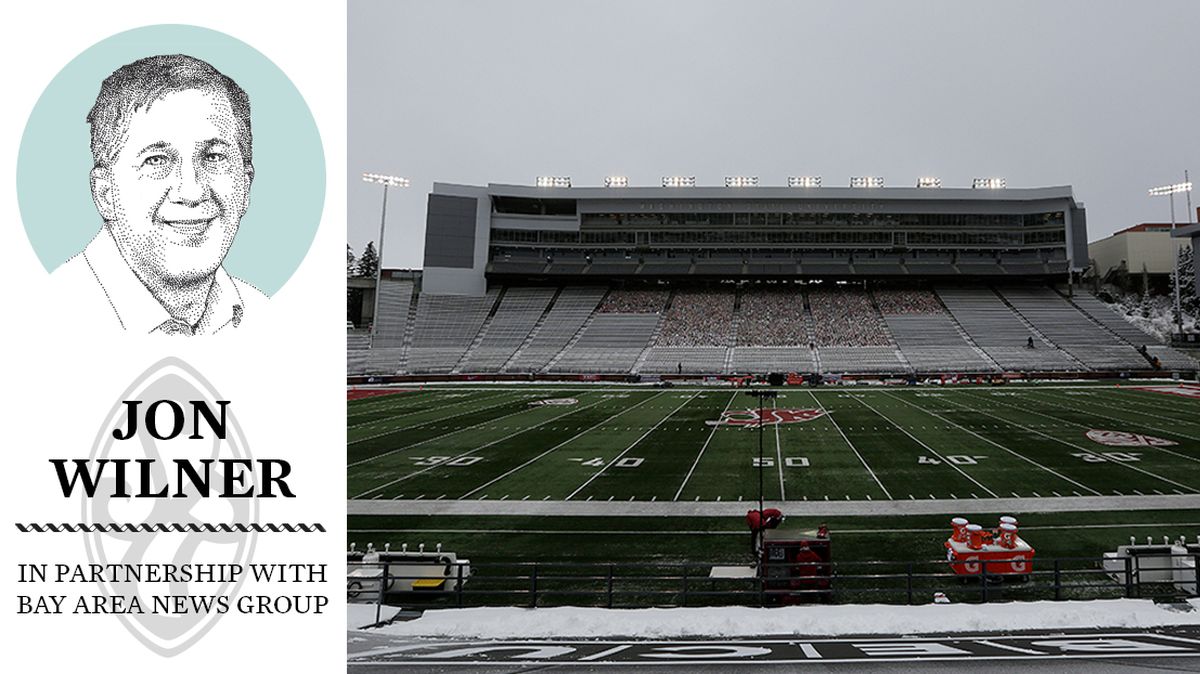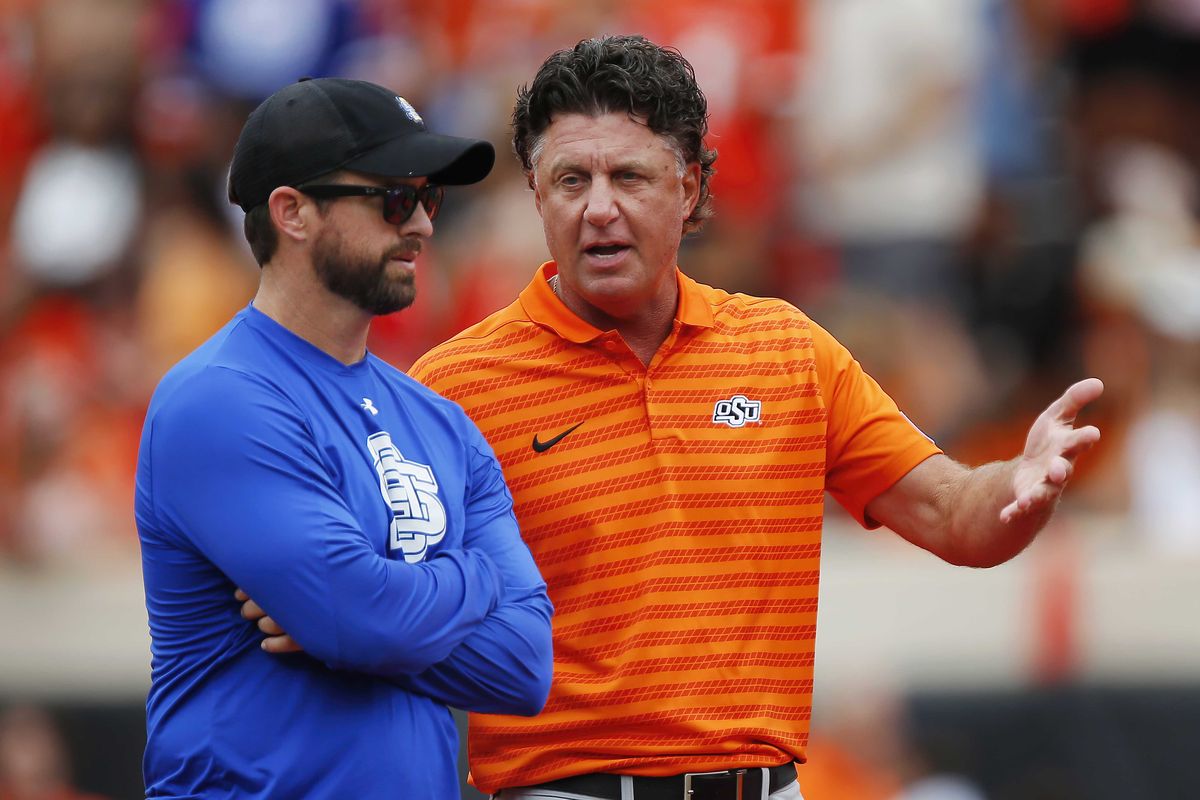What new coach Jimmy Rogers’ contract says about WSU’s commitment to football
Roughly 18 hours after the 2024 season concluded, Washington State found a coach for 2025 and beyond.
We won’t move as swiftly to render judgment (good or bad) on the decision to hire Jimmy Rogers.
Nothing against Rogers, but his resume is a tad thin. The 37-year-old has been a head coach for just two seasons, both at South Dakota State.
That doesn’t limit his ceiling. In recent years, numerous coaches with roots in the lower levels have thrived upon moving into the FBS, including Kansas State’s Chris Klieman (North Dakota State), Indiana’s Curt Cignetti (James Madison), Kansas’ Lance Leipold (Wisconsin-Whitewater) and Alabama’s Kalen DeBoer (Sioux Falls).
Also, Rogers’ short stint running the Jackrabbits was indisputably successful, with 27 wins in 30 games and an FCS national championship (in 2023).
But his limited experience leading a program and lack of experience at the major college level suggests a wait-and-see approach is warranted.
That’s doubly true considering Rogers has not named a coaching staff. The pick for offensive coordinator will be particularly important given that Rogers’ background, as a player and assistant, is on defense.
There is one certainty to the process in Pullman, however, and it should be cause for concern among WSU constituents: The Cougars signed Rogers to a five-year contract that will pay $1.57 million annually, according to published reports.
Not only is the compensation figure $1 million less than Jake Dickert earned this season, it’s $1 million less than Dickert was paid when they named him permanent head coach in the fall of 2021.
Back then, Dickert was an interim boss (after Nick Rolovich’s in-season dismissal). Yet the Cougars handed him a deal worth $2.7 million annually. Three years later, they signed Rogers for 40 % less.
Circumstances have changed, obviously. The Pac-12’s collapse forced WSU to navigate a massive drop in annual revenue. But the extent to which the university would continue to fund its football program at a competitive level was somewhat unknown, at least until Dickert departed for Wake Forest last week.
Our focus turned to WSU’s next move – not who the Cougars would hire so much as what they would pay.
Would the administration offer a salary comparable to those on the bottom tier of Power Four programs?
Or equivalent to those on the top tier of the Group of Five?
For that matter, how much would WSU’s next head coach earn relative to his peers in the rebuilt Pac-12?
In our view, the answer would offer insight into the university’s plans for funding football in the next era.
Here’s what we know:
Rogers will earn substantially less than Oregon State’s first-year coach, Trent Bray, who made $2 million this season (per USA Today’s salary database). He will earn less than East Carolina’s Mike Houston, Navy’s Brian Newberry and Temple’s Stan Drayton.
In fact, Rogers’ average salary would compare poorly to compensation for coaches in the revamped Pac-12, based on their published earning for 2024:
(Figures rounded)
Oregon State’s Trent Bray: $2 million
Colorado State’s Jay Norvell: $1.8 million
San Diego State’s Sean Lewis: $1.8 million
WSU’s Jimmy Rogers: $1.6 million
Boise State’s Spencer Danielson: $1.1 million
Now, context is required:
• Fresno State is also joining the Pac-12 in 2026 but had an interim coach this season, Tim Skipper, who won’t return next fall. The Bulldogs recently named Matt Entz as the permanent coach. His salary reportedly will average $1.5 million, a tick lower than Rogers’ compensation.
• Utah State also had an interim coach this season, Nate Dreiling, and recently hired Bronco Mendenhall for the permanent position. His starting salary will be $2 million, per KSL.com.
• Boise State is reworking Danielson’s contract, and it’s safe to assume the revised deal will include a hefty raise that pushes him above Rogers’ average salary.
Put another way: It appears Rogers’ average compensation over his five-year deal would rank sixth among the seven coaches at schools participating in the Pac-12 in 2026 – ahead of only Entz.
That isn’t exactly a top-market salary for the Group of Five, and it’s below our modest expectations for the Cougars.
But let’s wait for Rogers to fill out his coaching staff before drawing initial conclusions on the funding level for WSU football.
And even then, it’s difficult to know the Cougars’ long-haul financial trajectory because there’s a void at the top of the university.
Once WSU names a new president – Kirk Schulz is retiring this summer – full clarity on the university’s commitment to its football program will come into focus.
Until that point, we’ll reserve final judgment on the Rogers hire. Without the requisite resources, he won’t stand a chance.

